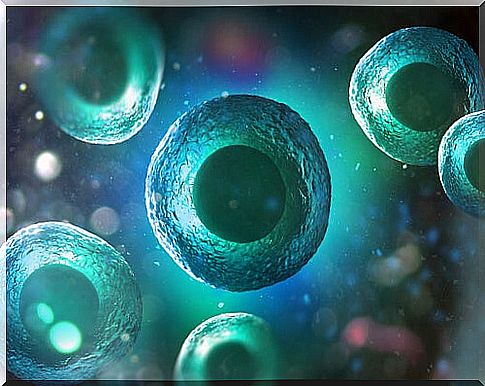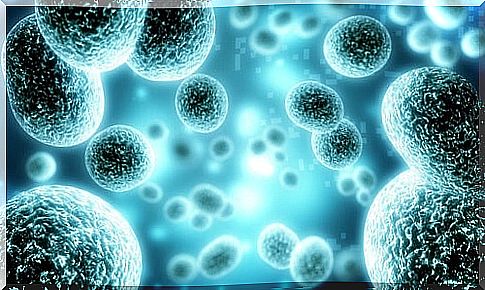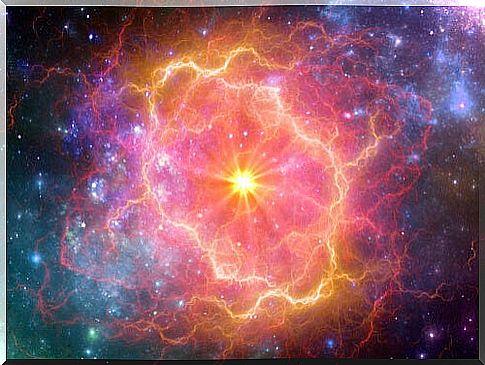Cells Emit Light Before Dying, According To A Study

More than 30 years ago, and almost by chance, the German scientist FA Popp and his colleagues discovered that cells emit light before dying.
This observation, as enigmatic as it is elegiac, would still take years to be corroborated. However, it offered a particular description of the properties of the human cell that managed, in the same postulate, to caress the popular imagination and collide head-on against the scientific skepticism of the time.
According to the scientist, such a poetic phenomenon reflects the programmed tendency of human cells to emit ultra-weak light radiation – made up of what he called biophotons – with an exponentially greater intensity than usual, during the moments prior to the cessation of their vital functions.
This capacity is not only observable in the last moments of the cell’s existence; For Popp, faithful follower of the works of the Russian A. Gurwitsch, every multicellular living being emits a light that, hypothetically, plays an important role in intercellular communication.
This type of communication is essential for the coordinated work of the various functions of the cell. Furthermore, it is articulated by virtue of a language of regularities and irregularities in the aforementioned light emissions.

Thus, the first conclusions to which, regarding these findings, the German scientist ventured to arrive, found a place in the field of health. His view of the matter implied the suggestion that the amount and characteristics of these biophotonic irradiations show statistical correlation with the health status of the organism, in general, and the human body, in particular.
This concept underpinned the narrative, vehemently and controversially defended by this scientist, that the more chaotic the emission of luminous units, the more it would allow the identification of different human diseases. However, this peculiar perspective, which has not had few promoters, has not yet been reliably scientifically validated.
Although such approaches to human health do not have an official endorsement or an accepted clinical application, what has been demonstrated is that this cellular bioluminous emission intervenes, in a certain way, in information transmission processes between cells.
Scientist S. Mayburov, who published his studies in the Massachusetts Institute of Technology (MIT) journal of technology, is responsible for this scientific harmony between light and cell biology.
Cells emit light, how is it possible?
An obvious reality is that living cells receive sunlight and store it by gathering their constituent units: photons. Otherwise, the phenomenon of photosynthesis would not exist and plants would not obtain energy for their subsistence.
On a planet without plants, breathable oxygen would be of a shortage incompatible with animal life; without photons, we just wouldn’t be here.
It appeals to logic to think that, according to the Einsteinian principle that matter is not destroyed but only transformed, the appropriation of photons by the cell – for the performance of its functions and the conservation of its constituent parts – brings I get the reuse of that light energy and the spontaneous loss, as occurs in any thermodynamic system, of portions of that energy. It is not unreasonable to think, therefore, of the perfect normality that surrounds a cell that emits light.
In line with the above, the Nobel Prize winner A. Szent-Györgyi -a renowned Hungarian physiologist of the 20th century- theorized that energy, as essential as it is for life on Earth, is not only the currency of exchange in every function and cellular process but, in an inalienable way, it is necessary for the maintenance of the structure of the cells.
And that energy, in its most primordial and precursor variant, is precisely the energy that is born as light radiation from the greatest of sources: the Sun.
The poetry of the cell giving away its light before dying
Popp himself suggested, based on his knowledge of cells under stress situations, that this action of rapidly and intensely discarding their luminescent content in the moments before death responded to a rebalancing mechanism of the cell environment.
Thus, in an attempt to enrich its external environment and disseminate energetic components that may still be useful, the cell would explosively shed its photon charge before ceasing to exist.
Molecular considerations aside, we glimpse here a metaphor that reflects, almost specularly, the same explosion of those old overgrown stars that we know as supernovae. By collapsing gravitationally in the final instances of their existence as a star, supernovae emit a huge amount of light radiation that, from our observatories, we see as eternal radiance.

And this explosion also serves to make the galactic environment a more enriched environment; to give back the atoms that millions of years ago decided to attract each other to form a rising star. These atoms will become part of other new stars, in the same way that the energy of the cell will be the energy of many others.
Perhaps both phenomena are the expression of the same law of the Universe that operates at such disparate scales; perhaps the smallest is a reflection of the largest and vice versa.
Although we know so little about reality, and despite the limitations of our scientific method, science is to be thanked for speaking to us in words of poetry from time to time.









